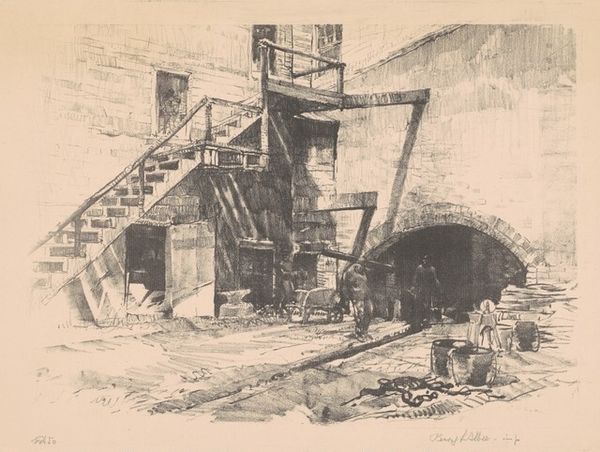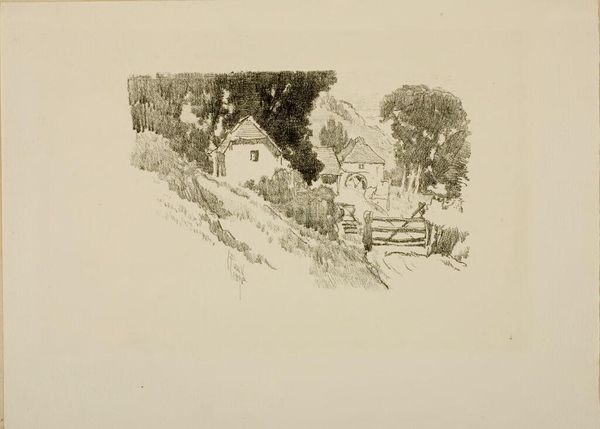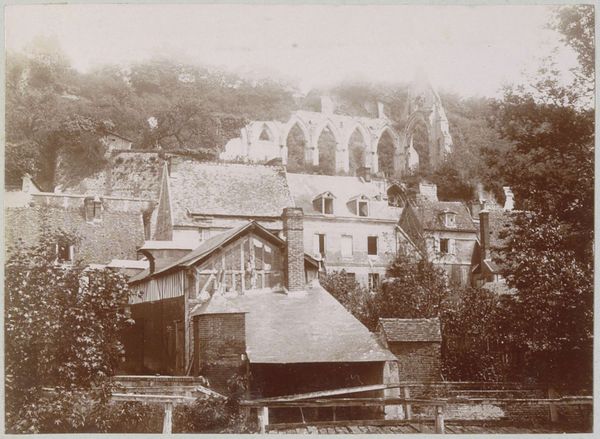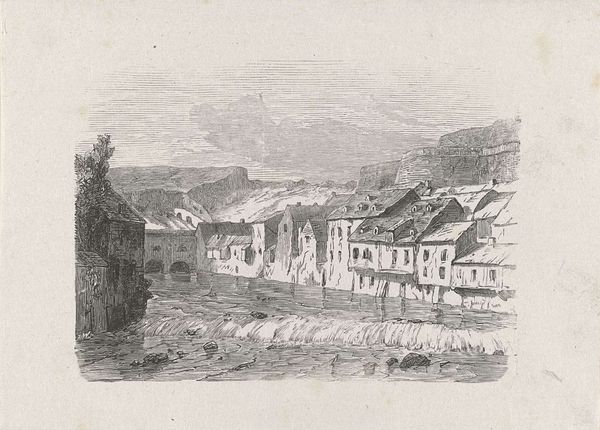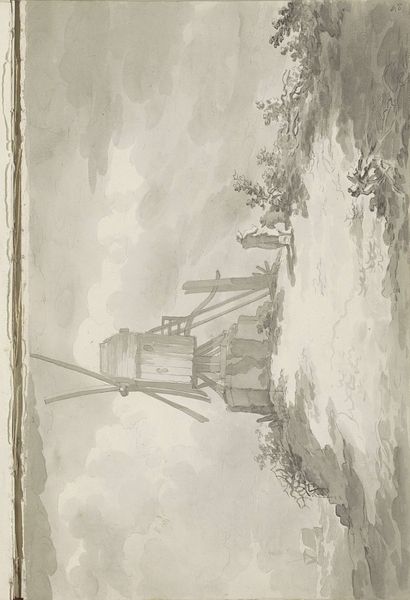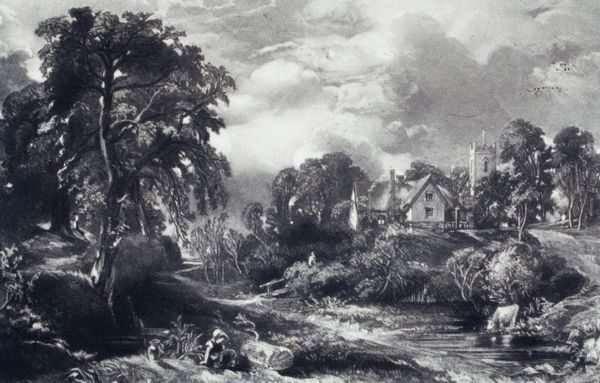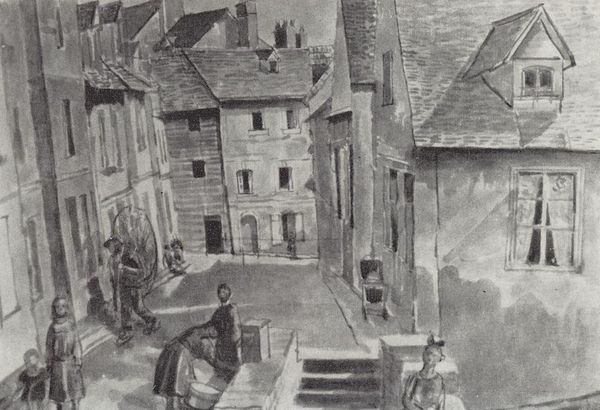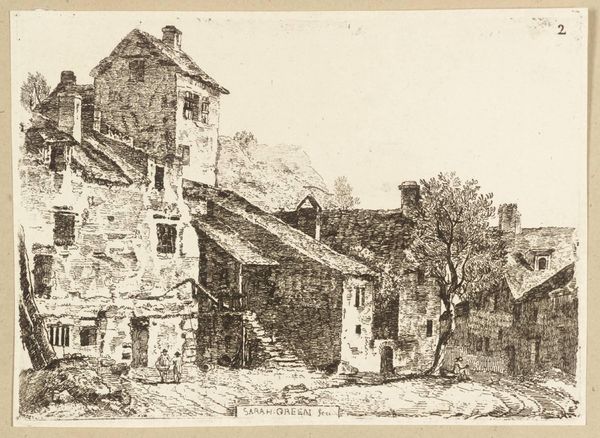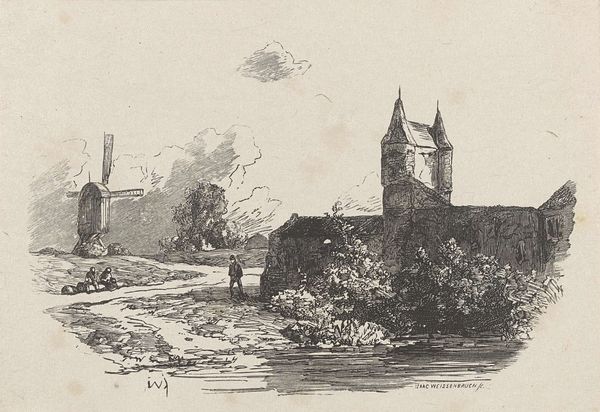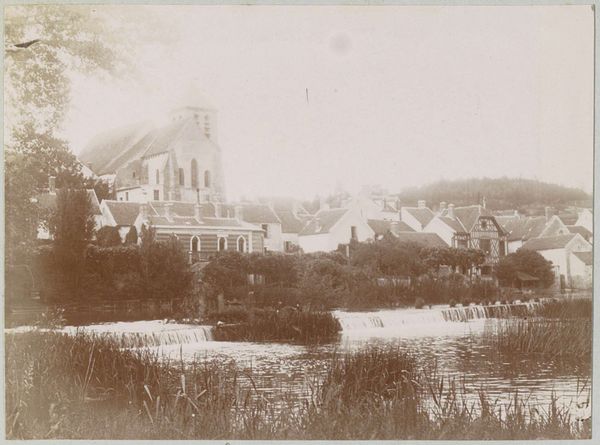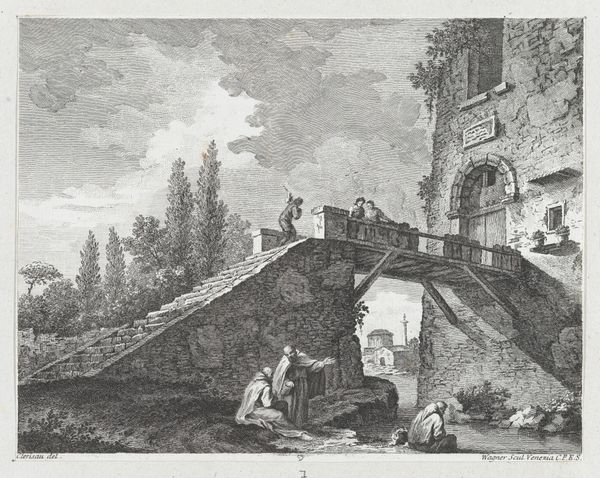
drawing, print, mezzotint, graphite, charcoal
#
drawing
# print
#
pencil sketch
#
landscape
#
charcoal drawing
#
pencil drawing
#
romanticism
#
mezzotint
#
graphite
#
charcoal
#
charcoal
#
graphite
Dimensions: 7 x 10 in. (17.78 x 25.4 cm) (plate)
Copyright: Public Domain
Editor: This is "A Mill near Brighton," dating from 1830-1855, by John Constable. It’s a print using mezzotint, graphite, and charcoal and is currently housed at the Minneapolis Institute of Art. There's a somber feeling here, with the looming windmill and dark tones. What do you see in this piece, looking at it through a historical lens? Curator: Well, consider Constable's context. He was deeply invested in representing the English countryside authentically, during a period of massive industrial and social change. This mill, rendered in such dramatic chiaroscuro, becomes symbolic. Do you notice how it dominates the landscape, almost aggressively? Editor: Yes, the windmill definitely seems to overpower the smaller structures and figure at the bottom. It's not a peaceful landscape. Curator: Exactly. Think about the social history – mills were central to rural economies, but they also represented technological advancements that threatened traditional ways of life. Constable's choice to portray it this way perhaps reflects anxieties about that shift. The "Romanticism" tag underscores a yearning for a disappearing past. Editor: So it's not just a picture of a mill, but a statement about the changing times? A commentary on industrialization? Curator: Precisely. And look at the mezzotint technique. It allowed for these rich tonal gradations, amplifying the emotional intensity. Consider how museums exhibit pieces like this – what narrative are *they* constructing by placing it within specific collections? How does display alter meaning? Editor: That makes me think about how even today, displaying art involves choices that can reinforce or challenge dominant narratives. Thank you! I didn't think I would get such socio-political analysis from such a modest landscape drawing! Curator: My pleasure. Art never exists in a vacuum; every piece participates in a broader dialogue.
Comments
No comments
Be the first to comment and join the conversation on the ultimate creative platform.
